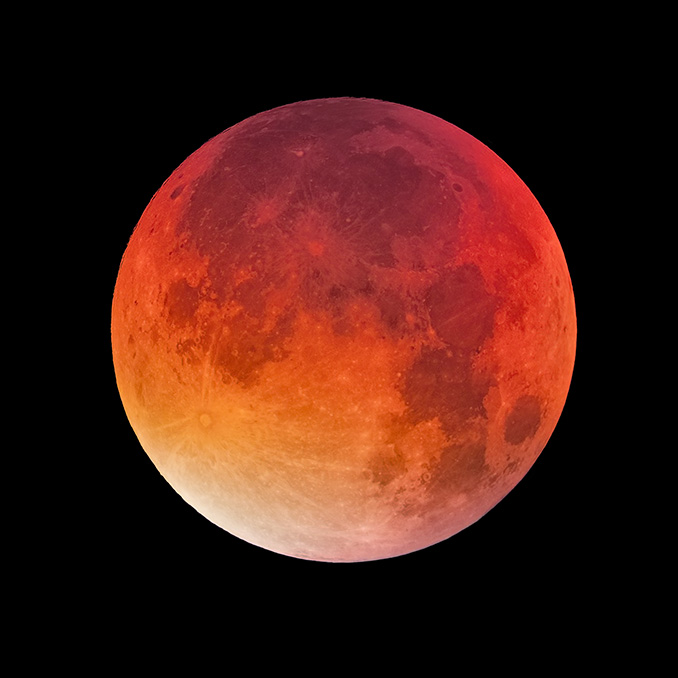BLOOMINGTON, Ind. -- A total eclipse of the moon lasting 85 minutes will be the highlight of May for skywatchers. In the Midwest, the full moon will rise on the evening of May 15-16 with the eclipse already beginning. Observers on the East Coast will see the entire eclipse in a dark sky. On the West Coast, the total eclipse will begin in evening twilight and continue in a dark sky.
Starting at 10:28 p.m. EDT on May 15, the lunar surface will slowly turn dusky gray, and then an orange coloring will become noticeable, especially in a telescope. Totality will last from 11:29 p.m. to 12:54 a.m. Observers across the Americas will see most or all of the eclipse. For those in Europe and Africa, the eclipse will be a morning event with totality happening at dawn on May 16.
Planets
Jupiter and Venus will still be close as May begins after their conjunction in April. The two planets will be less than 1 degree apart when they rise at 4 a.m. Venus will be brighter, but Jupiter will still be brilliant. A low-power telescope will show both planets well, especially in early morning twilight.
Mars will rise just before 4 a.m. on May 1. Late in the month the Red Planet will pass less than 1 degree south of Jupiter. The two planets will rise together shortly before 3 a.m. on May 29 and will still be the same distance apart by 5 a.m., standing 25 degrees high in the eastern sky.
Saturn will rise around 3 a.m. local time on May 1. By month's end it will be visible by 1 a.m. in the constellation Capricornus. The yellow planet will be best in the hour before dawn, when it will be more than 20 degrees high in the southeast. Its rings will be tilted 12 degrees to our line of sight, the minimum tilt for this year.
Watch Mercury on early May evenings before it ends its best evening appearance this year for skywatchers in the Northern Hemisphere. On May 2 an hour after sunset, Mercury, the moon, and the Pleiades star cluster will be close together above the western horizon.
Meteor shower
This month Earth will encounter a stream of dust left behind in space by Comet Halley, causing the Eta Aquarid meteor shower that will peak before dawn on May 6. The shower will be active for a few days before and after the peak as well. The meteors will appear to come from a point called the radiant in the constellation Aquarius, which will rise in the east about three hours before dawn. The higher this point is above the horizon, the more meteors will be visible. The moon will not interfere with the display of meteors. Observers in the Northern Hemisphere may see 10 meteors per hour under good viewing conditions, because Aquarius will be close to the eastern horizon. Those watching in the Southern Hemisphere will see Aquarius much higher in the sky, and there may be as many as 50 meteors per hour at the peak.
Moon phases
The moon will be at first quarter on May 8, full on May 16 (with a total lunar eclipse), at last quarter on May 22, and new on May 30.
Author: Hal Kibbey Email: hkibbey [at] gmail.com


 The College of Arts
The College of Arts